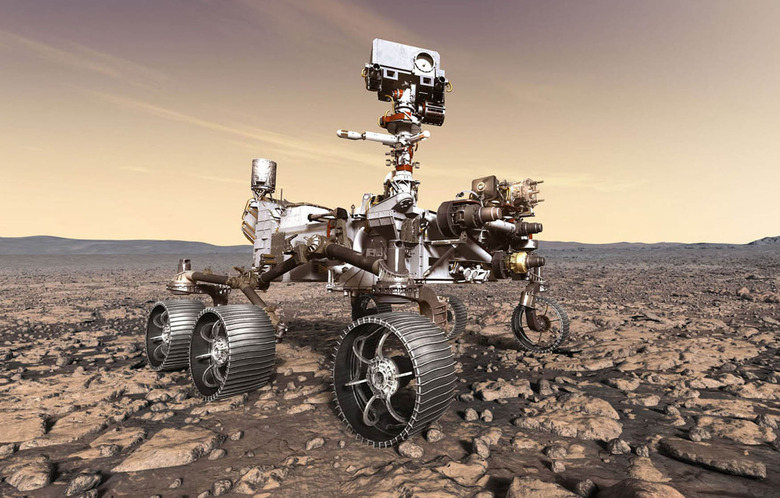Get Ready To Learn More About Martian Weather
- NASA wants to better understand the weather of Mars and its new Perseverance rover should help with that.
- Scientists are eager to learn about the role that dust plays in Martian weather, and how huge dust storms can seemingly pop up out of nowhere.
- Perseverance should arrive on Mars within 100 days.
I don't know about you, but I'm all for learning more about the weather on other planets. NASA's first foray into otherworldly weather reports came in the wake of the InSight lander setting up shop on the Red Planet. The space agency even set up a website for regular updates and it was really interesting to see the shifting weather over the course of weeks and months.
Now, another piece of powerful NASA hardware will be taking weather readings and reporting back to Earth. This time it's the soon-to-arrive Perseverance rover. As NASA's Jet Propulsion Laboratory explains in a new blog post, Perseverance has instruments that will work to provide even more accurate weather reports from the surface of Mars than we've ever had before.
Today's Best Deal
Perseverance has many objectives to tackle during its months on Mars. The rover is equipped with the ability to take and seal samples of the Martian surface in preparation for eventual study back on Earth. That part of the mission will be carried out over an extended period of time, but one of the things the rover can begin doing sooner rather than later is detecting the weather.
NASA's JPL explains:
The instrument behind the weather data is called MEDA – short for the Mars Environmental Dynamics Analyzer. Part of its goal is to gather the basics: temperature, wind speed and direction, pressure, and relative humidity. Models of the temperature at Perseverance's landing site range from an average of minus 126 degrees Fahrenheit (minus 88 degrees Celsius) at night to about minus 9 degrees Fahrenheit (minus 23 degrees Celsius) in the afternoon.
NASA says that one of the biggest things it wants to better understand about Martian weather is the role that dust plays. The planet's surface is largely dry and very dusty, and dust storms can dominate huge sections of the planet, and sometimes even take over the entire world. The storms are intense, but why do they form? NASA wants to find out.
"Understanding Martian dust is very important for this mission," Jose Antonio Rodriguez-Manfredi, who will be working with the weather instruments on Perseverance, said in a statement. "Those fine grains of dust lift off the surface and cover the entire planet. We don't know how Martian winds and changes in temperature are able to cause those global dust storms, but this will be important information for future missions."
The Perseverance rover just passed its 100-days-out mark, and it's reaching the final leg of its journey to Mars. The rover will land on Mars in February, and assuming everything goes according to plan, we should start to see some of the early data from the mission shortly thereafter.
